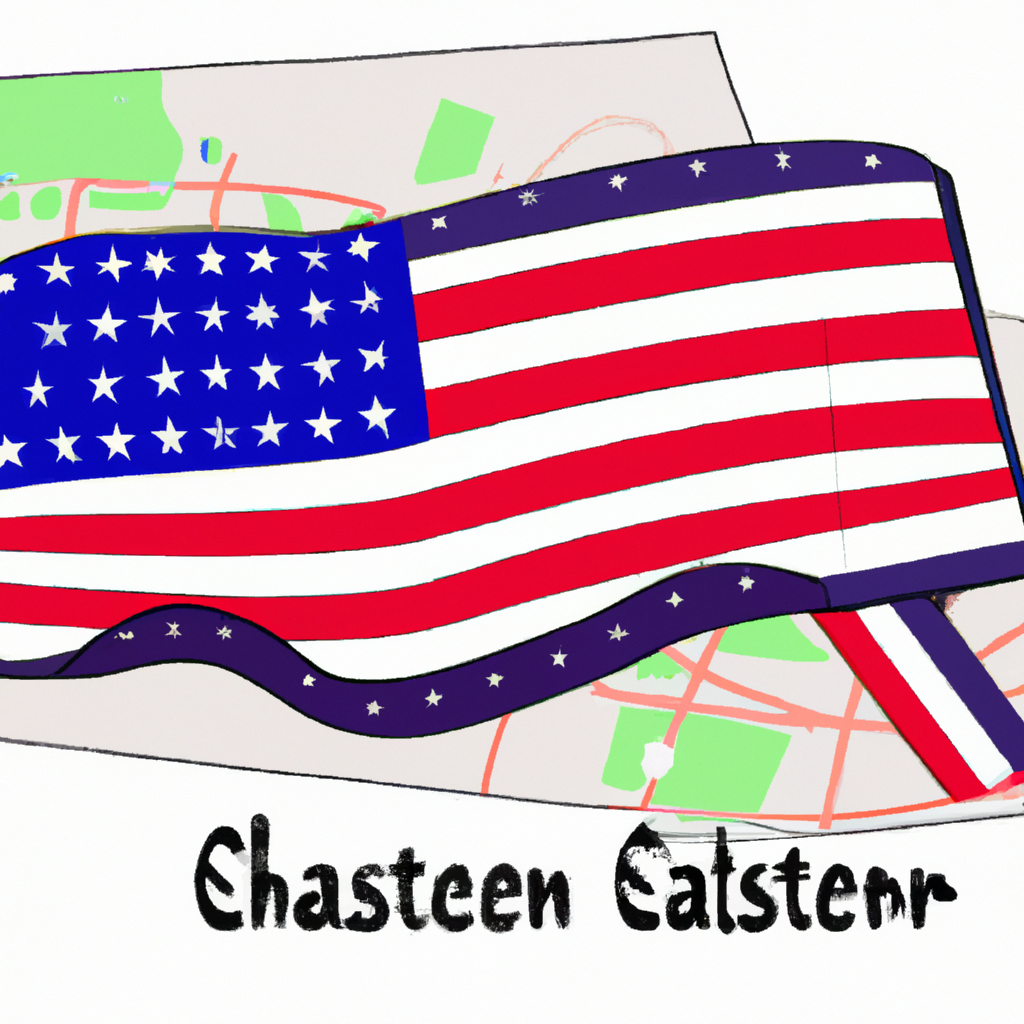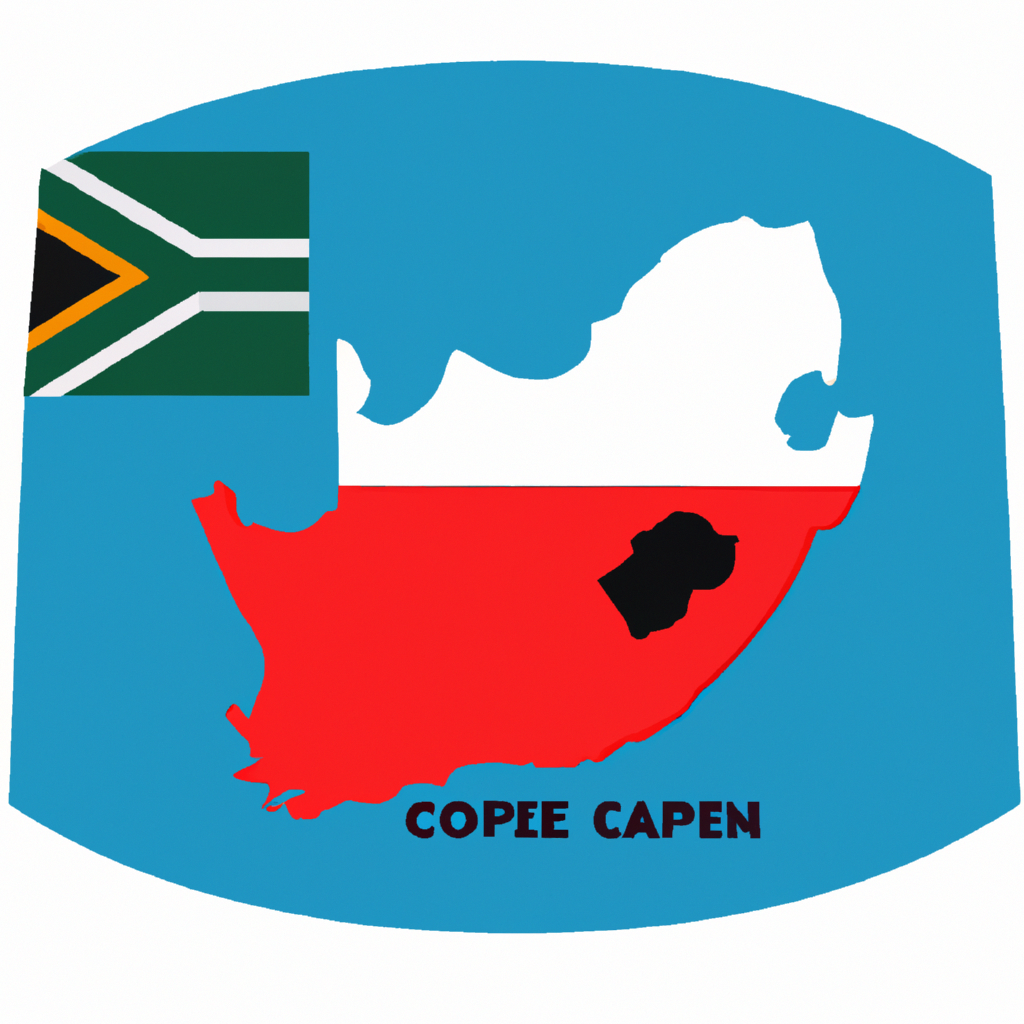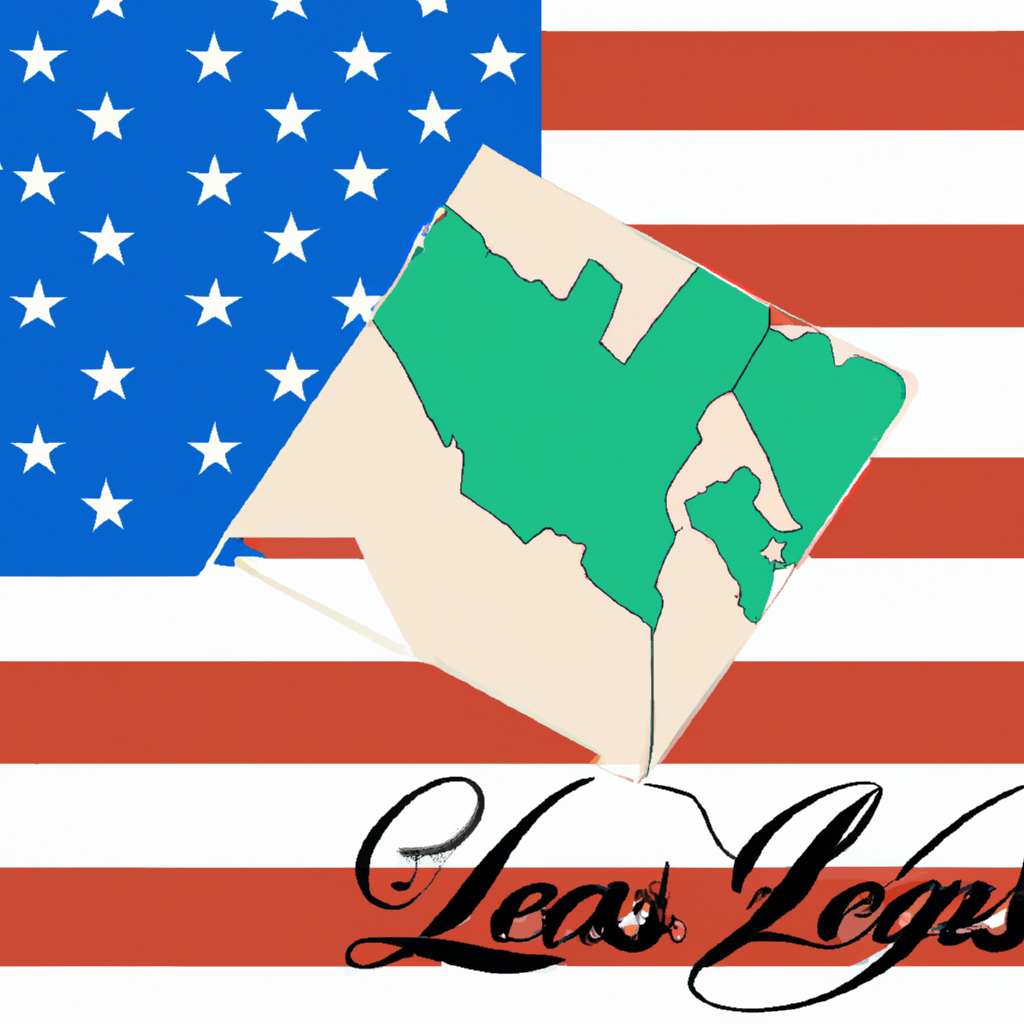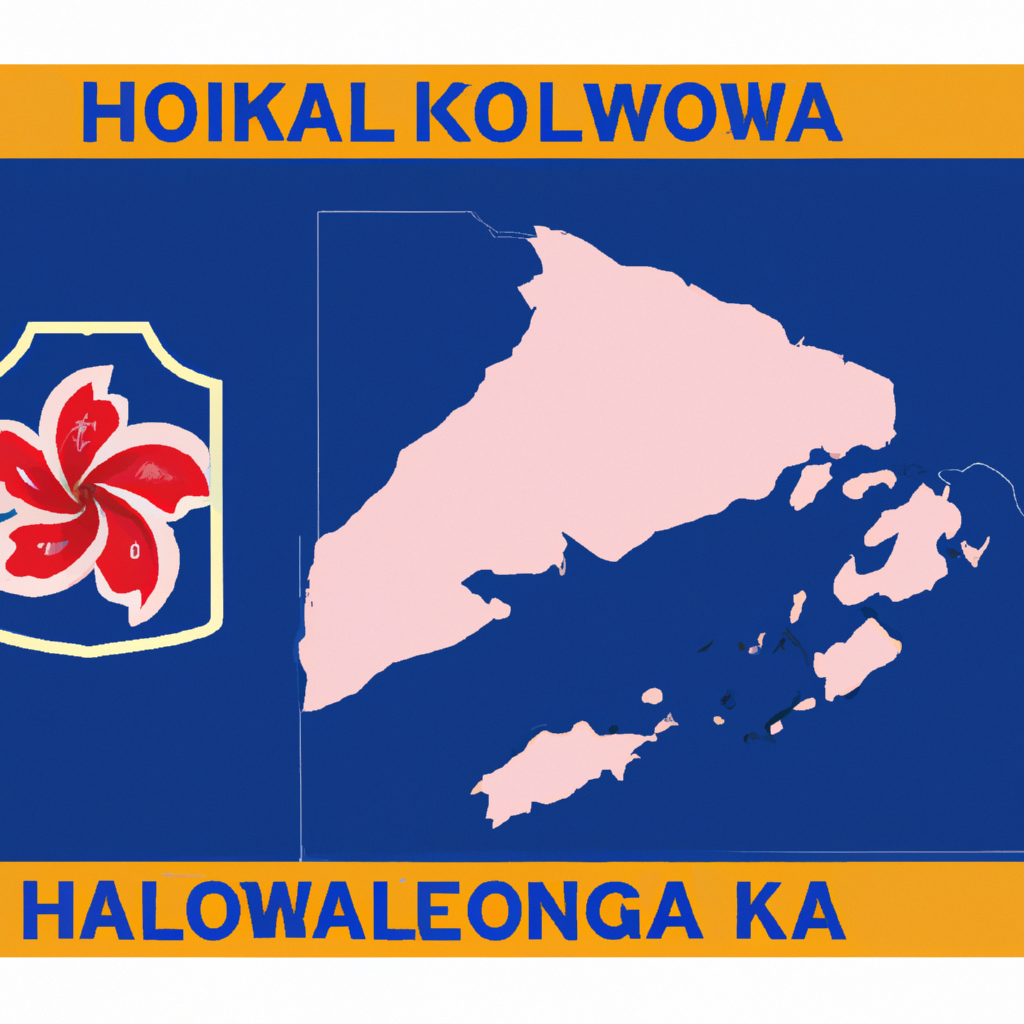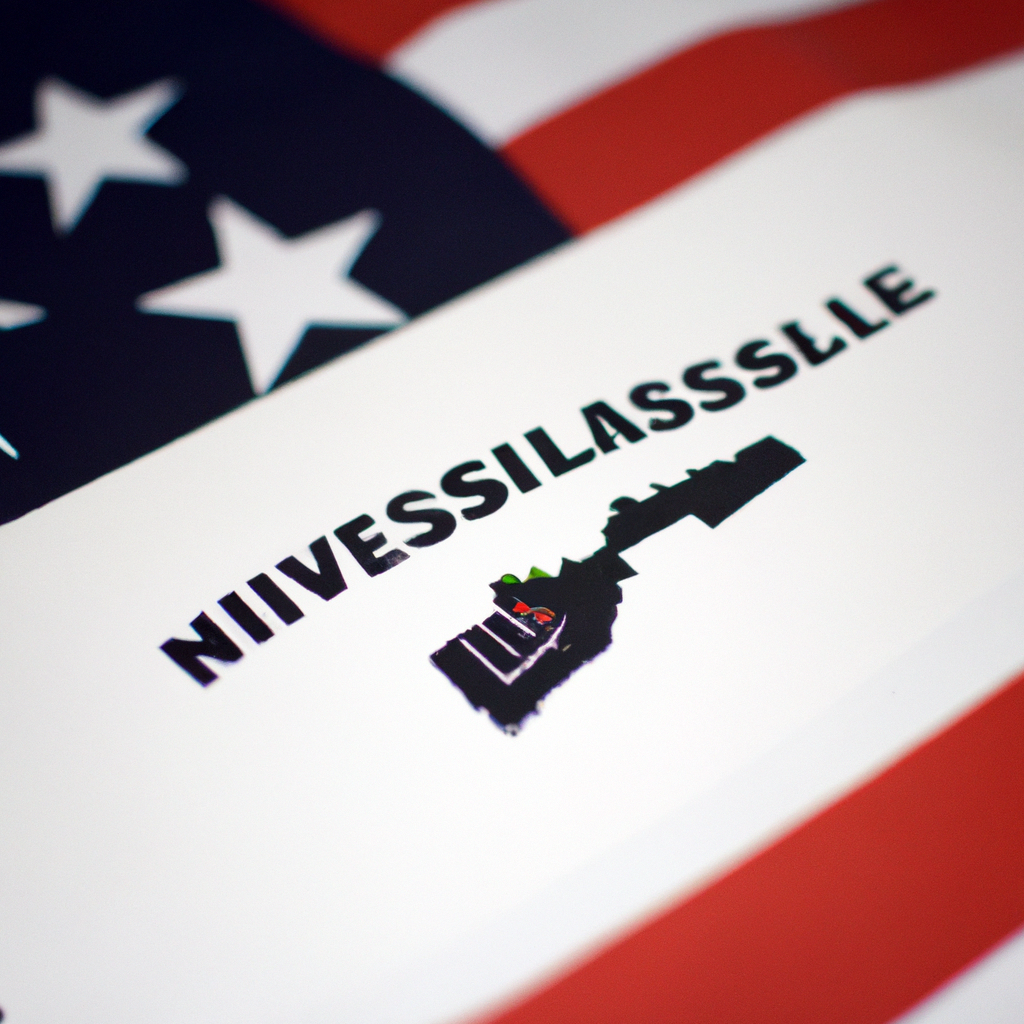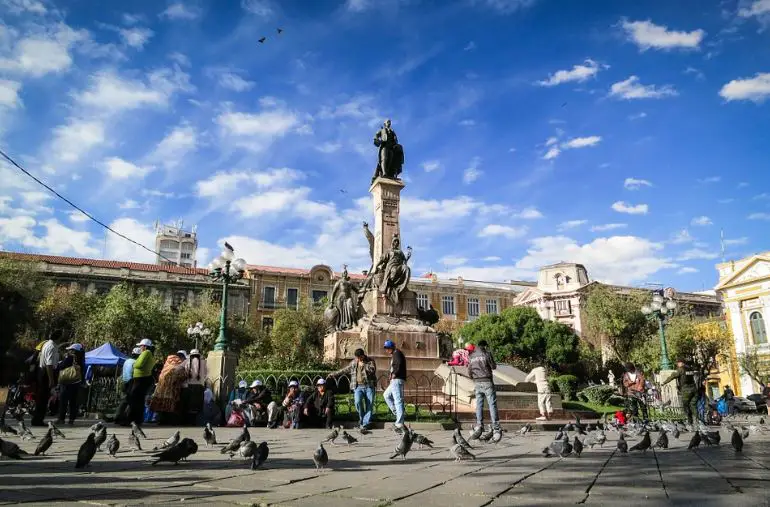La Paz, Bolivia: Interesting Facts,History, Things to do,Why to Visit
Post ByAdequate Travel
With its unique mix of colonial charm, vibrant culture, breathtaking scenery, and high-altitude beauty, La Paz, Bolivia is a destination that should not be overlooked by travellers seeking an incredible experience. This vibrant capital city of the Bolivian Plateau is a fascinating mix of old and new, with a wide variety of interesting facts, history, and things to do. From exploring its centuries-old churches and museums to exploring its vibrant markets, La Paz has something to offer even the most seasoned of travelers. With its stunning beauty, thrilling outdoor activities, vibrant culture, and interesting history, La Paz has all the makings of the perfect destination. Whether you're looking to explore the wonders of the Bolivian Plateau or simply to indulge in La Paz's unique mix of modern and ancient, this fascinating city has something to offer!
Bolivia is a landlocked country located in South America. It shares borders with Brazil, Paraguay, Argentina, Chile, and Peru. The country's official languages are Spanish, Quechua, and Aymara. Bolivia is known for its diverse geography, ranging from the Andes Mountains to the Amazon Rainforest. It has a rich indigenous culture, with a majority of the population being of indigenous descent. The country has a mix of traditional and modern lifestyles, with a strong emphasis on agriculture, mining, and tourism as major industries.Bolivia has a long history of political and economic instability, with various governments and political movements coming into power. The country has faced challenges such as poverty, inequality, and social unrest. In recent years, Bolivia has made significant progress in reducing poverty and improving health and education outcomes. The government has also focused on expanding access to clean energy and protecting the environment. Notably, Bolivia is one of the largest producers of lithium in the world, with its vast salt flats holding a significant portion of the global lithium reserves.However, the country still faces challenges including corruption, drug trafficking, and disputes over land rights. Bolivia has also faced political turmoil, with a highly contested election in 2019 leading to the resignation of President Evo Morales.Overall, Bolivia is a country with a diverse cultural heritage, stunning natural beauty, and ongoing efforts to overcome its challenges and improve the quality of life for its citizens.Uncover the best bolivia attractions that will leave you awe-inspired and wanting more.
Interesting facts
Geography
Bolivia is known for its diverse geography, encompassing the Andes Mountains, the vast Altiplano plateau, the Amazon rainforest, and the Gran Chaco region. It is a landlocked country located in western-central South America.
Some interesting facts about Bolivia's geography:
1. Andes Mountains:
The western part of Bolivia is dominated by the Andes Mountains, which run through the country from north to south. These mountains are home to some of the highest peaks in South America, including Mount Illimani and Mount Sajama.
2. Altiplano:
The Altiplano is a vast plateau located between the eastern and western Andes Mountains. It is one of the world's highest inhabited regions and stretches across Bolivia, as well as parts of Peru, Chile, and Argentina. The famous Lake Titicaca, the highest navigable lake in the world, is situated in the Bolivian Altiplano.
3. Amazon Rainforest:
In the northern part of Bolivia, the Amazon rainforest covers a significant portion of the country. This region is known for its incredible biodiversity and features diverse ecosystems, including tropical rainforests, rivers, and swamps. It is home to numerous indigenous communities and unique wildlife species.
4. Gran Chaco:
The Gran Chaco is a vast lowland plain located in southeastern Bolivia. It extends into several neighboring countries, such as Paraguay and Argentina. The region is characterized by dry forests, savannas, and wetlands, and it is an important habitat for various animal species, including jaguars and armadillos.
Culture and History
Bolivia has a rich cultural heritage that reflects the blending of indigenous traditions with Spanish colonial influences. The country's history is dotted with fascinating events and achievements.
Here are some interesting facts about Bolivia's culture and history:
1. Indigenous Culture:
Bolivia is known for its strong indigenous influence, with over 36 different indigenous groups recognized by the government. Each group has its unique language, customs, and traditions. For example, the Aymara and Quechua people are two prominent indigenous groups in Bolivia.
2. Potosi Silver Mines:
Potosi, located in Bolivia's highlands, was once one of the wealthiest cities in the world due to its rich silver deposits. During the Spanish colonial era, massive amounts of silver were extracted from the famous Cerro Rico (Rich Hill) mine. Today, the mines are still operational, and tourists can visit them to learn about the region's mining history.
3. Tiwanaku Civilization:
The Tiwanaku civilization was a pre-Columbian civilization that thrived in the Andean region of Bolivia between 300 and 1000 AD. Their capital, Tiwanaku, was an advanced city with impressive architecture, including the famous Sun Gate. The ruins of Tiwanaku are now a UNESCO World Heritage Site and attract visitors from around the world.
4. The Cholita Wrestlers:
In Bolivia, a unique cultural phenomenon known as the Cholita Wrestlers has gained popularity. Cholitas, indigenous women who traditionally wear colorful skirts and bowler hats, have become professional wrestlers. Their matches combine traditional clothing and wrestling moves, providing both entertainment and a challenge to gender stereotypes.
Biodiversity and Wildlife
Bolivia is renowned for its incredible biodiversity, thanks to its varied ecosystems and protected areas. The country hosts numerous rare and endangered species, making it a destination for nature enthusiasts.
Check out some fascinating facts about Bolivia's biodiversity and wildlife:
1. Madidi National Park:
Madidi National Park is located in the Amazon rainforest and is considered one of the most biodiverse places on Earth. It boasts over 1,000 species of birds, including the colorful macaws, as well as rare mammals like the jaguar, giant otter, and spectacled bear.
2. Salar de Uyuni:
Bolivia is home to the world's largest salt flat, Salar de Uyuni. This otherworldly landscape stretches over 10,000 square kilometers and creates stunning reflections during the wet season. Visitors to Salar de Uyuni can witness flamingos, unique cacti, and even stay in hotels made entirely of salt.
3. Pink River Dolphins:
In the Bolivian Amazon, the rivers are inhabited by elusive pink river dolphins, also known as Boto or Amazon river dolphins. These freshwater dolphins have adapted to their unique environment and are known for their pink color, friendly nature, and exceptional swimming abilities.
4. Chiquitania Forests:
The Chiquitania region in eastern Bolivia is characterized by vast dry forests and is a UNESCO World Heritage Site. It is home to an array of animal species, including the elusive jaguar, giant anteater, and various types of monkeys.
Note: The usage of HTML tags, such as h5 and p, is not applicable here as the format has been lost within this plain text response.From museums to parks,bolivia tourist attractions offer something for everyone, making it a versatile destination for all type of tourists.History of Bolivia
The history of Bolivia is rich and diverse, with indigenous civilizations, Spanish colonization, and a tumultuous political landscape shaping its past and present. Here is a detailed overview of Bolivia's history:
Pre-Colonial Era
1. Ancient cultures: Bolivia was home to various indigenous cultures, including the Tiwanaku and Inca civilizations. These civilizations left behind impressive architectural remains, such as Tiwanaku's ceremonial site and Inca forts.2. Spanish conquest: In the 16th century, Spanish conquistadors, led by Francisco Pizarro, arrived in Bolivia. They encountered resistance from indigenous groups but eventually established their colonial presence.Colonial Period
1. The Viceroyalty of Peru: Bolivia was part of the Viceroyalty of Peru, which was established by the Spanish to exploit the rich mineral resources, particularly silver mines, in the region.2. Potosi silver mines: Potosi, located in present-day Bolivia, became one of the richest and largest silver mines in the world during this period. The exploitation of indigenous labor led to significant suffering and loss of life.3. Independence movements: In the early 19th century, Bolivians, inspired by the independence movements in neighboring countries, began to seek independence from Spanish rule. Leaders like Simon Bolivar and Antonio Jose de Sucre played important roles in the struggle for independence.Post-Independence Era
1. Political instability: Bolivia faced a series of political upheavals and coups throughout the 19th and 20th centuries, leading to frequent changes in government and instability. The country experienced both democratic and authoritarian regimes.2. Chaco War: In the 1930s, Bolivia engaged in a deadly conflict, known as the Chaco War, with Paraguay over territorial disputes in the Gran Chaco region. The war resulted in significant loss of life and territory for Bolivia.3. National Revolution: In 1952, a revolution led by workers and peasants resulted in widespread social and economic reforms. This marked a significant period of change in Bolivia, characterized by land reforms, nationalization of industries, and increased indigenous rights.Recent History
1. Political and social challenges: Bolivia faced political and social challenges in the late 20th and early 21st centuries, including economic crises, social inequality, and conflicts over natural resources. Indigenous movements gained prominence during this period, advocating for greater representation and rights.2. Morales era: From 2006 to 2019, Evo Morales, Bolivia's first indigenous president, led the country. His presidency was marked by social reforms, economic growth, and a focus on indigenous rights. However, controversies over his prolonged rule and allegations of electoral fraud led to his resignation in 2019.3. Current landscape: Bolivia is currently navigating political transitions and challenges, striving for democratic stability, economic development, and social equality. Indigenous cultures and traditions continue to shape the country's identity and contribute to its rich cultural heritage.Exploring the rich heritage of historical sites in bolivia is a journey through time and culture.Famous Things of Bolivia
1. Salar de Uyuni: Located in southwest Bolivia, Salar de Uyuni is the world's largest salt flat. It covers over 10,000 square kilometers and is a breathtaking natural wonder. The salt flat creates a mesmerizing mirror effect when covered with water, providing a unique photographic opportunity.
2. Tiwanaku: This archaeological site is an ancient city that was once the capital of a powerful pre-Columbian civilization. Tiwanaku is known for its magnificent stone structures and represents the rich cultural heritage of Bolivia.
3. La Paz: As the administrative capital of Bolivia, La Paz is a vibrant city nestled in the Andes Mountains. It offers stunning panoramic views, bustling markets, and a fusion of traditional and modern culture. The city's unique cable car system, called Mi Teleférico, is also a major attraction.
4. Lake Titicaca: Shared by Bolivia and Peru, Lake Titicaca is the highest navigable lake in the world. Its crystal-clear waters are home to a number of indigenous communities. The fascinating Uros floating islands, made entirely of reeds, are a must-visit attraction on the lake.
5. Potosi: Potosi is a UNESCO World Heritage Site and was once one of the richest cities in the world during the Spanish colonial era. It is known for its immense silver mines, colonial architecture, and historical significance.
Explanation:
The heading in the h5 tag gives a concise title to the information provided. In this case, it highlights the famous things of Bolivia. Each famous thing is explained in a separate paragraph, and the details are given within the p tags.
The first famous thing mentioned is the Salar de Uyuni, which is elaborated upon in the paragraph. Similarly, the remaining four points, Tiwanaku, La Paz, Lake Titicaca, and Potosi, are explained in separate paragraphs. These paragraphs provide a brief overview of each attraction, highlighting its significant features and attractions.
Using the appropriate heading tags (h5) and paragraph tags (p) in HTML ensures a clear structure and semantic organization of the information, allowing readers and search engines to easily understand and categorize the content.Discover some unique facts about bolivia that will leave you amaze and intrigue.
Culture of Bolivia
1. Ethnic Diversity:
The culture of Bolivia is incredibly diverse, with a rich blend of indigenous, European, and African influences. The country is home to various ethnic groups, including Quechua, Aymara, Guarani, and more.
2. Language:
The official language of Bolivia is Spanish. However, numerous indigenous languages such as Quechua and Aymara are widely spoken, particularly in rural areas.
3. Indigenous Roots:
The indigenous heritage plays a significant role in Bolivian culture. Indigenous traditions, clothing styles, art, music, and spiritual practices are visible throughout the country. Festivals like the Aymara New Year celebration and the Carnival of Oruro highlight these indigenous roots.
4. Religion:
Bolivia is predominantly Roman Catholic, with a strong influence of syncretism – the blending of indigenous beliefs with Catholicism. Many indigenous customs and rituals are incorporated into Catholic celebrations, creating a unique spiritual blend.
5. Music and Dance:
Bolivia is known for its vibrant and diverse music and dance traditions. Folklore plays a significant role, with the sounds of traditional instruments like the charango, zampoña, and quena accompanying lively dances such as the cueca, saya, and caporales.
6. Cuisine:
Bolivian cuisine reflects a mix of indigenous flavors and influences from Spanish and African cuisines. Traditional dishes like salteñas (meat-filled pastries), anticuchos (grilled skewered meat), and the popular dish called "salteña" are enjoyed throughout the country.
7. Art and Craftsmanship:
Bolivia is known for its vibrant and intricate art and craftsmanship. Traditional textiles, pottery, and woodwork reflect both indigenous traditions and Spanish influences. The town of Copacabana is famous for its exquisite straw hats, while the city of Sucre is renowned for its colonial architecture and historical artwork.
8. Traditional Clothing:
Traditional clothing varies among different Bolivian ethnic groups. The cholita fashion worn by indigenous women, featuring a bowler hat, layered skirts, and bright colors, is an iconic representation of Bolivian culture.
9. Folklore and Mythology:
Bolivian folklore and mythology are deeply rooted in ancient indigenous beliefs and legends. Stories of mythical creatures like the Kusillo, an Andean clown, and the Supay, the god of the underworld, are passed down through generations and form an integral part of Bolivian culture.
10. Festivals and Celebrations:
Bolivia is known for its vibrant festivals and celebrations, filled with music, dance, and colorful costumes. The Carnival of Oruro, the Gran Poder Festival, and the Feast of the Sun are just a few examples of the country's lively and culturally significant events.
Immerse yourself in the local culture by exploring bolivia's top-rated tourist attractions.Cuisine of Bolivia
In Bolivia, the cuisine is diverse and influenced by indigenous, Spanish, and other South American culinary traditions. Traditional Bolivian cuisine varies by region, with each area having its own distinct flavors and dishes. Here are some examples of Bolivian cuisine:
1. Salteñas
Salteñas are savory pastries filled with meat, vegetables, and a flavorful broth. They are typically baked and served as a popular street food in Bolivia.
2. Silpancho
Silpancho is a traditional Bolivian dish consisting of breaded and fried meat (often beef or pork), served with rice, potatoes, and a fried egg on top. It is a hearty and satisfying meal.
3. Chuño
Chuño is a freeze-dried potato dish that has been a staple in the Andean region for centuries. It is made by freeze-drying potatoes at high altitudes, resulting in a unique texture. Chuño is commonly used in soups, stews, and other traditional dishes.
4. Api con Pastel
Api con Pastel is a popular Bolivian breakfast or snack combination. Api is a warm and thick corn porridge flavored with cinnamon and served with deep-fried pastries called "pastelitos".
5. Picante de Pollo
Picante de Pollo is a spicy chicken stew made with tomatoes, onions, garlic, and hot peppers. It is often served with rice and potatoes and is a favorite dish during festivals and celebrations.
6. Tucumanas
Tucumanas are deep-fried pastries filled with seasoned ground beef, onions, and hard-boiled eggs. They are a popular street food in Bolivia, especially in the city of Cochabamba.
7. Sajta de Pollo
Sajta de Pollo is a dish from the Cochabamba region of Bolivia. It consists of chicken cooked in a spicy tomato and peanut sauce, typically served with rice and boiled potatoes.
8. Cuñape
Cuñape is a traditional Bolivian cheese bread made with yucca flour and cheese. These small, round bread rolls are cheesy, soft on the inside, and slightly crispy on the outside.
Bolivian cuisine offers a delicious mix of flavors, textures, and cultural influences. Exploring the country's diverse culinary offerings is a must for anyone looking to experience the rich gastronomic heritage of Bolivia.
Uncover the best bolivia attractions that will leave you awe-inspired and wanting more.1. Explore Salar de Uyuni
Salar de Uyuni is the world's largest salt flat, located in southwest Bolivia. It is a stunning natural wonder that offers mesmerizing views of vast white plains and clear blue skies. Visitors can take guided tours to explore this unique landscape, walk on the salt flat, and take perspective-distorted photos. The salt flat also has several islands, such as Isla Incahuasi, with giant cacti and breathtaking panoramas of the surrounding area.
2. Visit La Paz
La Paz, the capital city of Bolivia, is known for its rich culture, historic architecture, and vibrant markets. Take a stroll through the Witches' Market (Mercado de las Brujas) to experience the local traditions and find unique souvenirs. Explore the fascinating Calle Jaen, a narrow street lined with colonial houses and museums that provide insights into Bolivia's history. Don't miss the breathtaking views of La Paz from Mirador Killi Killi, a viewpoint located in the city center.
3. Trek in the Cordillera Real
The Cordillera Real is a mountain range in the Andes, offering incredible opportunities for trekking and mountaineering. The region has stunning landscapes, including snowy peaks, crystal-clear lakes, and picturesque valleys. The most popular trek in this area is the Choro Trek, a multi-day hike that takes you from high-altitude passes to lush subtropical forests.
4. Visit Lake Titicaca
Lake Titicaca, shared by Bolivia and Peru, is the largest high-altitude lake in the world. Take a boat tour to explore the lake's beautiful islands, such as Isla del Sol and Isla de la Luna. These islands are believed to be the birthplace of the Inca civilization and still retain their ancient traditions and ruins. Experience the unique lifestyle of the Uros people, who live on floating reed islands and have preserved their cultural heritage.
5. Explore the Amazon Rainforest
Bolivia is home to a portion of the Amazon rainforest, offering a chance to immerse yourself in the incredible biodiversity of the region. Take a jungle tour to spot exotic wildlife, go on night hikes to observe nocturnal creatures, and visit indigenous communities to learn about their traditional way of life. The Madidi National Park is a popular destination for experiencing the Amazon's natural wonders.
These are just a few examples of the many exciting things to do in Bolivia. Each of these activities provides a unique and enriching experience, showcasing the country's natural beauty, cultural heritage, and adventure opportunities. Whether you are interested in stunning landscapes, vibrant cities, or cultural exploration, Bolivia has something for everyone.When planning your trip to bolivia, be sure to include the best things to do in bolivia, which encompass a wide range of cultural experiences.Climate of Bolivia
The climate of Bolivia varies greatly due to the diverse geography and topography of the country. There are three main climatic zones in Bolivia: the highlands, the valleys, and the tropical lowlands.
Highlands
The highlands of Bolivia have a cold, mountainous climate. The temperature decreases with altitude, with freezing temperatures occurring at higher elevations. The months of June to August are the coldest and driest, while October to March are the warmer months with increased rainfall. For example, in La Paz, which is located in the highlands, temperatures can range from as low as 30°F (-1°C) in the winter to around 70°F (21°C) in the summer.
Valleys
The valleys of Bolivia have a more temperate climate compared to the highlands. The temperatures are milder, especially during the day, and the region receives moderate rainfall. The city of Cochabamba, located in a valley, experiences average temperatures ranging from 55°F (13°C) to 80°F (27°C) throughout the year.
Tropical Lowlands
The tropical lowlands, also known as the Amazon Basin, have a hot and humid climate with consistent high temperatures throughout the year. The region receives heavy rainfall, especially during the wet season from November to March. The city of Santa Cruz de la Sierra, located in the lowlands, experiences temperatures ranging from 70°F (21°C) to 90°F (32°C) on average.
In addition to these main climate zones, Bolivia also has unique microclimates in certain areas. For example, the Salar de Uyuni, the largest salt flat in the world, has a desert-like climate with little precipitation and extreme temperature variations. The Yungas region, located on the eastern slopes of the Andes, has a subtropical climate with high rainfall and dense vegetation.
Discover unique facts about bolivia, a destination filled with rich history and natural beauty.Popular Activities in Bolivia
1. Trekking and Hiking:
Bolivia is a paradise for avid trekkers and hikers due to its diverse landscapes and stunning natural beauty. One popular hiking destination is the Cordillera Real, where trekkers can explore high-altitude lakes, snow-capped peaks, and ancient Inca trails. Another must-visit is the famous Uyuni Salt Flats, where multi-day hikes offer breathtaking views and the opportunity to witness unique phenomena like mirror-like reflections and vibrant sunsets.
2. Wildlife Watching:
Bolivia offers incredible opportunities for wildlife enthusiasts. The Madidi National Park is known for its rich biodiversity, featuring over 1,000 bird species, jaguars, giant otters, and many other unique animals. The Pampas de Yacuma provides the chance to spot pink river dolphins, anacondas, capybaras, and a variety of bird species through guided river safaris.
3. Exploring Salar de Uyuni:
The Salar de Uyuni is the world's largest salt flat and a breathtaking destination to explore. Travelers can take guided tours to witness the seemingly endless salt desert, visit the Isla Incahuasi to see giant cacti, and marvel at the captivating sunrises and sunsets reflecting off the pristine salt crust.
4. Cultural Experiences:
Immerse yourself in Bolivia's rich culture and history by visiting cities like La Paz, Sucre, and Potosi. Explore the colonial architecture and vibrant markets of La Paz, visit the Casa de la Libertad and the Dinosaur Park in Sucre, or venture to Potosi to explore its silver mines and learn about the region's mining heritage.
5. Adventure Sports:
Bolivia offers thrilling adventure sports for adrenaline junkies. The Yungas region is famous for extreme mountain biking experiences down the Death Road, a treacherous pathway that descends from the Andean highlands to the Amazon rainforest. Other activities include paragliding over Lake Titicaca, whitewater rafting in the Coroico or Tuichi River, and zip-lining in the jungles of the Amazon basin.
Plan your trip with a list of the best things to do in bolivia, catering to all interests.Nightlife in Bolivia
Overview:
Bolivia may not be known for its vibrant nightlife compared to other South American countries, but it still offers a variety of options for those seeking nighttime entertainment. From bustling clubs to laid-back bars and traditional live music, Bolivia has something to suit different tastes. Here are some highlights of Bolivia's nightlife scene:Clubs and Bars:
1. La Paz: As Bolivia's largest city and administrative capital, La Paz offers a diverse range of clubs and bars. Popular nightlife spots include the "Calle Jaén" district, known for its historic charm and vibrant nightlife. Here, you can find numerous bars, pubs, and clubs playing various genres of music.2. Santa Cruz: Located in eastern Bolivia, Santa Cruz has a more modern nightlife scene compared to other cities in the country. The city boasts a wide selection of clubs, bars, and lounges catering to different crowds. For example, "Monarca" is a well-known club in Santa Cruz, featuring DJs and live music from both local and international artists.3. Cochabamba: Home to many universities, Cochabamba has a vibrant nightlife shaped by its young population. Calle España is a popular street lined with bars and clubs hosting live music performances, particularly rock and electronic music.Live Music:
1. Peñas: Bolivia is renowned for its traditional music and folklore. Peñas are establishments where live traditional music performances take place. Sucre, Bolivia's constitutional capital, is known for its vibrant peña scene. Here, you can enjoy traditional Bolivian music such as cuecas, saya, and more.2. Jazz and Blues: For those interested in jazz and blues, there are venues in major cities like La Paz and Santa Cruz that host live performances. These venues often feature local and international musicians, creating a cozy and laid-back atmosphere.Specific Events and Festivals:
1. Carnival: Bolivia's Carnival celebration, held in February, offers vibrant and lively nightlife. Cities like Oruro and Santa Cruz have massive street parties, parades, concerts, and clubs that stay open all night long during this festive period.2. La Paz Friday Nights: La Paz hosts an event called "Viernes Culturales" (Cultural Fridays) in its historic downtown. On Friday nights, the streets turn into an open-air cultural festival with live music, dancing, art exhibits, and food stands.3. Electronic Music Events: Bolivia has a growing electronic music scene, particularly in La Paz and Santa Cruz. Various clubs and events showcase both national and international DJs, creating an energetic atmosphere for electronic music enthusiasts.In conclusion, while Bolivia may not have the same level of renowned nightlife as some of its South American neighbors, it still offers a rich variety of options for entertainment after dark. From clubs and bars to live music venues and unique festivals, Bolivia's nightlife scene provides a mix of traditional and modern experiences for locals and tourists alike.Discover the untold stories behind bolivia unique facts, and historical treasures.Why visit Bolivia?
Bolivia is a country located in the heart of South America, known for its diverse landscapes, rich culture, and historical sites. Here are some reasons why you should consider visiting Bolivia:
1. Stunning Natural Landscapes
Bolivia offers a wide range of breathtaking landscapes that will leave you in awe. From the mesmerizing salt flats of Uyuni, the largest salt flats in the world, to the stunning Lake Titicaca, the highest navigable lake globally, Bolivia's natural beauty is truly unparalleled. The country also boasts the Andes Mountains, which offer excellent opportunities for hiking and trekking.
2. Rich Cultural Heritage
Bolivia is home to a vibrant and diverse cultural heritage. It is a melting pot of indigenous traditions, colonial influences, and modern arts. The city of La Paz is a great example, where you can explore traditional markets like the Witches' Market and immerse yourself in local customs and traditions. The country also hosts numerous festivals and celebrations throughout the year, providing a chance to experience the vibrant culture firsthand.
3. Historical Sites
Bolivia has a rich history dating back to ancient civilizations such as the Tiwanaku and Inca. Visitors can explore the ruins of Tiwanaku, an archaeological site that offers insights into pre-Columbian cultures. Additionally, the famous city of Potosi, once one of the wealthiest cities in the world due to its silver mines, showcases well-preserved colonial architecture and historic landmarks.
4. Adventure and Outdoor Activities
If you are an adventure enthusiast, Bolivia has plenty to offer. The country is renowned for its trekking routes, including the popular Inca Trail and the challenging Choro Trail. You can also go mountain biking down the famous Death Road, an adrenaline-pumping activity that takes you through stunning mountain landscapes. Bolivia's diverse geography also allows for activities like rock climbing, white-water rafting, and wildlife safaris.
5. Unique Culinary Experiences
Bolivian cuisine is a fusion of indigenous, Spanish, and neighboring countries' flavors. You can indulge in traditional dishes such as salteñas (meat-filled pastries), anticuchos (grilled skewers), and the famous Bolivian street food, salchipapas (French fries with sausage). Don't forget to try the refreshing Chuflay cocktail or the traditional mate de coca (coca leaf tea) while exploring the local food scene.
In summary, Bolivia offers a combination of stunning natural landscapes, rich cultural heritage, historical sites, adventurous activities, and unique culinary experiences. Whether you are a nature lover, history enthusiast, or thrill-seeker, Bolivia has something to offer for everyone. Plan your trip to this captivating country and be prepared for an unforgettable experience.Whether you're a history buff or an adventure seeker, bolivia has an attraction for you. So, don't miss the chance to visit popular places in boliviaNumber of Days Required to Visit Bolivia
Bolivia is a diverse and beautiful country with a rich cultural heritage and stunning natural landscapes. The number of days required to visit Bolivia depends on various factors such as the specific places and attractions you want to visit, your travel pace, and your personal preferences.
Factors Influencing the Number of Days
1. Places to Visit: Bolivia offers a wide range of attractions, including the ancient ruins of Tiwanaku, the bustling markets of La Paz, the surreal salt flats of Uyuni, the Amazon rainforest, and the beautiful Lake Titicaca. The more places you want to visit, the more time you will need.
Example: If you want to explore the main highlights of Bolivia, including Uyuni, La Paz, and Lake Titicaca, you may need around 10-12 days.
2. Travel Pace: Some travelers prefer to immerse themselves in a few destinations, spending more time in each place, while others like to cover more ground and see as much as possible in a shorter time. Your travel pace will determine the number of days needed.
Example: For a relaxed and leisurely trip, spending a minimum of 2-3 days in each major destination would be ideal. However, if you prefer a faster pace, you could cover more places in a shorter time.
3. Activities and Excursions: Bolivia offers various adventurous activities and excursions, such as hiking, mountain biking, visiting indigenous communities, wildlife spotting, and more. If you want to include these activities, you should consider additional days in your itinerary.
Example: If you plan to take a 3-day tour of the Uyuni Salt Flats, you would need to factor in those days for the excursion and add them to your overall travel duration.
Sample Itineraries
1. 7-Day Bolivia Highlights Tour:
- Day 1-2: Arrive in La Paz, explore the city and visit nearby attractions.
- Day 3-4: Take a 3-day Uyuni Salt Flats tour, including overnight stays in salt hotels.
- Day 5-6: Visit Lake Titicaca and explore the islands and local communities.
- Day 7: Return to La Paz and depart.
2. 14-Day Complete Bolivia Exploration:
- Day 1-3: Explore La Paz and nearby attractions.
- Day 4-6: Take a 3-day Amazon rainforest tour, including wildlife spotting and canoeing.
- Day 7-10: Visit Uyuni Salt Flats, including a multi-day tour and stargazing experience.
- Day 11-13: Explore the colonial city of Sucre and the historic site of Potosi.
- Day 14: Return to La Paz and depart.
It's essential to plan your itinerary based on your interests, available time, and budget. Consider consulting with a travel professional or using online resources to fine-tune your travel plans and ensure you make the most of your time in Bolivia.
Uncover the best bolivia attractions that will leave you awe-inspired and wanting more.1. What is the capital city of Bolivia?
Bolivia's capital city is La Paz. Located in western Bolivia, it sits at an elevation of about 3,650 meters (11,975 feet) above sea level, making it one of the highest capital cities in the world.
Example:
- La Paz is known for its breathtaking views of the surrounding mountains, such as Mount Illimani.
- The city is famous for its unique geographical layout, with many buildings situated on steep hillsides.
2. What languages are spoken in Bolivia?
The official languages of Bolivia are Spanish, Quechua, and Aymara. Spanish is the most widely spoken language, while Quechua and Aymara are primarily spoken by indigenous communities in the country.
Example:
- Spanish is the language of business, government, and education in Bolivia.
- Quechua and Aymara are important for preserving indigenous cultures and traditions.
3. What are the main attractions in Bolivia?
Bolivia offers a range of unique attractions for visitors. Some popular destinations include:
Example:
- Salar de Uyuni: The world's largest salt flat, famous for its mesmerizing mirror effect after rainfall.
- Lake Titicaca: Shared with Peru, it is the highest navigable lake in the world and holds cultural importance for the indigenous communities living on its shores.
- The Bolivian Amazon: Home to diverse wildlife and indigenous communities, offering opportunities for jungle tours and wildlife spotting.
4. What is the currency of Bolivia?
The official currency of Bolivia is the Bolivian Boliviano (BOB). It is denoted by the symbol "Bs."
Example:
- Exchange rates for the Bolivian Boliviano can fluctuate, so it is advisable to check the latest rates before currency conversion.
- Currency exchange facilities can be found at airports, banks, and authorized exchange offices in Bolivia.
5. What is the climate like in Bolivia?
The climate in Bolivia varies greatly due to the country's diverse geography. In general, there are three main climate zones: tropical, temperate, and cold.
Example:
- The tropical climate zone is found in the lowland regions of Bolivia, including parts of the Amazon Basin, with high temperatures and high levels of humidity.
- The temperate climate zone is present in areas such as the Yungas and valleys, offering mild temperatures throughout the year.
- The cold climate zone is characteristic of the highland regions, including cities like La Paz and Potosi, where temperatures can drop below freezing, especially during the winter months.
Step back in time as you visit the historical sites in bolivia, where the past comes alive.

